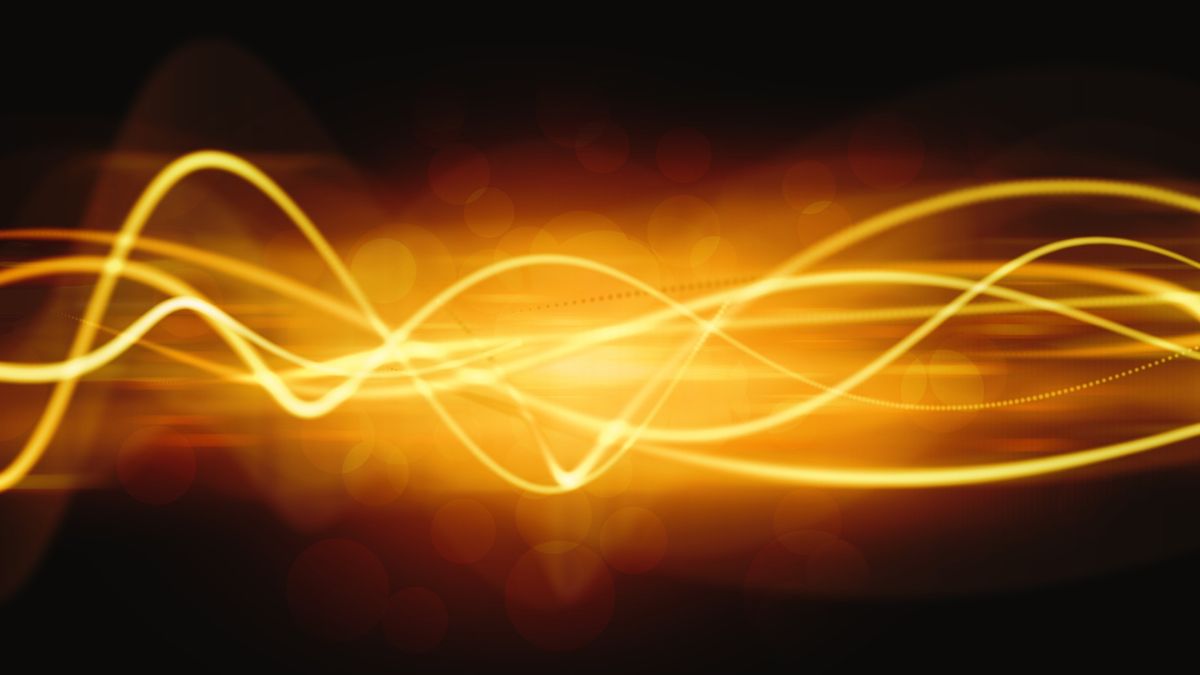Physicists unveil 1D gas made of pure light
Physicists have created a one dimensional gas out of light particles for the first time. Studying how the photon gas behaves could help researchers discover some yet-unknown quantum optical effects.

For the first time, physicists have created a one-dimensional gas made out of pure light, and they want to use it to study how photons, or particles of light, behave on a quantum level.
Scientists created the new state of matter, called a photon gas, by firing a laser into a reflective container filled with dye, causing photons in the beam to cool and eventually condense. The researchers published their findings Sept. 6 in the journal Nature Physics.
"To create these types of gasses, we need to concentrate lots of photons in a confined space and cool them simultaneously," study senior author Frank Vewinger, a physicist at the University of Bonn, said in a statement.
Photons are bosons, particles that have integer spin, meaning that they can occupy the same state and space at a given time. When a gas of bosons is cooled to near-zero temperatures, all its particles lose their energy, entering into the same energy states.
As we can only distinguish between the otherwise identical particles in a gas cloud by looking at their energy levels, this equalizing has a profound effect: The once disparate cloud of vibrating, jiggling, colliding particles that make up a warmer gas then become, from a quantum mechanical point of view, perfectly identical, creating an elusive form of matter called a Bose-Einstein condensate.
Related: Inside the 20-year quest to unravel the bizarre realm of 'quantum superchemistry'
Existing in a condensate form causes particles' positions within a gas to become highly uncertain. As a result, the places that each particle could possibly occupy grows to be larger in area than the spaces between the particles themselves. Instead of discrete objects, then, the overlapping photons in a photon gas act as if they are just one giant particle.
Sign up for the Live Science daily newsletter now
Get the world’s most fascinating discoveries delivered straight to your inbox.
Physicists have created photon gasses in two dimensions before. But creating them in just one is way trickier.
"Things are a little different when we create a one-dimensional gas instead of a two-dimensional one," Vewinger said. "So-called thermal fluctuations take place in photon gasses but they are so small in two dimensions that they have no real impact. However, in one dimension these fluctuations can — figuratively speaking — make big waves."
To create a one-dimensional photon gas, the researchers filled a miniscule, reflective container with a dye solution before firing a laser into it. The photons of the laser light bounced back and forth inside the container until they collided with the dye molecules, which robbed them of their energy and caused them to cluster together.
By applying a transparent polymer to the container’s reflective walls, the researchers were able to tweak the way they reflected the light so that it effectively condensed in one dimension — or a line.
"These polymers act like a type of gutter, but in this case for light," lead author Kirankumar Karkihalli Umesh, a doctoral student at the University of Bonn, said in the statement. "The narrower this gutter is, the more one-dimensionally the gas behaves."
By studying their newly-created 1D photon gas, the researchers confirmed that it behaves quite differently from its 2D form. Unlike in 2D photon gasses, the thermal fluctuations of their 1D cousins prevent them from completely condensing in certain regions. This creates a partial phase transition between laser light and its condensate form that is "smeared out" across the gas, like icy water that has not completely frozen, according to the researchers.
Investigating how the photon gas differs across dimensions could help the researchers to discover as-yet-undiscovered quantum optical effects, the researchers said.

Ben Turner is a U.K. based staff writer at Live Science. He covers physics and astronomy, among other topics like tech and climate change. He graduated from University College London with a degree in particle physics before training as a journalist. When he's not writing, Ben enjoys reading literature, playing the guitar and embarrassing himself with chess.
Most Popular


